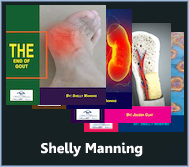 My bones today are stronger than ever before. Let me tell you how this came about.
My bones today are stronger than ever before. Let me tell you how this came about.
Click to see more detail on Video
What is a good bone density for a woman?
Bone density is typically measured using a diagnostic test called a bone mineral density (BMD) test, which calculates the amount of mineral, such as calcium, in your bones. The results of a BMD test are usually reported in terms of bone density measurements, such as grams per square centimeter (g/cm²) or as a T-score and Z-score.
For women, there isn’t a specific bone density value that is universally considered “good” or “healthy.” Instead, bone density results are typically interpreted using T-scores and Z-scores, which compare bone density to that of a healthy young adult of the same sex and age-matched peers, respectively.
- T-score: This score compares your bone density with that of a healthy young adult of the same sex. A T-score of -1 and above is considered normal bone density. A T-score between -1 and -2.5 indicates low bone density (osteopenia), and a T-score of -2.5 or lower indicates osteoporosis.
- Z-score: This score compares your bone density with that of other people of the same age, sex, and size. A Z-score within the normal range typically indicates that your bone density is within the expected range for your age group.
When interpreting bone density results, healthcare providers consider factors such as age, sex, ethnicity, and individual health status. They may also take into account other risk factors for osteoporosis and fractures. Therefore, it’s important to discuss bone density results with a healthcare provider, who can provide personalized guidance based on your specific circumstances.
While there isn’t a specific bone density value considered “good” for women, maintaining bone density within the normal range for your age and sex is generally desirable for optimal bone health and fracture prevention. Regular monitoring of bone density and consultation with a healthcare provider can help assess bone health and determine appropriate interventions if needed.
Are women’s bones more dense?
Women’s bones are not typically more dense than men’s bones. In fact, men generally have higher bone density than women, on average. There are several factors that contribute to this difference:
- Bone size: Men tend to have larger bones than women, both in terms of length and width. Larger bones have greater mass and density, contributing to higher overall bone density.
- Hormonal differences: Estrogen, the primary female sex hormone, plays a significant role in bone health. Estrogen helps maintain bone density by inhibiting bone breakdown and stimulating bone formation. However, estrogen levels decline significantly during menopause, leading to accelerated bone loss and increased risk of osteoporosis in women.
- Lifestyle factors: Men are more likely to engage in weight-bearing and muscle-strengthening activities, such as weightlifting and certain sports, which can contribute to greater bone density. Regular physical activity stimulates bone growth and remodeling, leading to stronger bones.
- Dietary differences: Men often have higher protein and calcium intakes than women, which are essential nutrients for bone health. Adequate protein intake supports bone formation, while calcium is necessary for bone mineralization.
While men generally have higher bone density than women, both sexes are susceptible to bone loss and osteoporosis, especially as they age. Factors such as genetics, lifestyle habits, and underlying health conditions can influence bone density and the risk of fractures. Therefore, it’s important for both men and women to maintain a healthy lifestyle, including regular exercise, balanced nutrition, and preventive healthcare measures, to support optimal bone health throughout their lives.
What is a normal bone mass for a woman?
Bone mass, also referred to as bone density or bone mineral density (BMD), varies among individuals and is influenced by factors such as age, sex, genetics, and lifestyle factors. The normal range for bone density is typically determined by comparing an individual’s bone density measurements to those of a healthy young adult of the same sex.
Bone density is usually measured using a diagnostic test called a dual-energy X-ray absorptiometry (DXA) scan, which calculates the amount of mineral, such as calcium, in your bones. The results of a DXA scan are reported in terms of bone density measurements, such as grams per square centimeter (g/cm²), or as T-scores and Z-scores.
- T-score: This score compares your bone density with that of a healthy young adult of the same sex. A T-score of -1 and above is considered normal bone density. A T-score between -1 and -2.5 indicates low bone density (osteopenia), and a T-score of -2.5 or lower indicates osteoporosis.
- Z-score: This score compares your bone density with that of other people of the same age, sex, and size. A Z-score within the normal range typically indicates that your bone density is within the expected range for your age group.
For women, a T-score of -1 and above is generally considered normal bone density. However, it’s important to note that bone density measurements alone may not provide a complete picture of bone health, and other factors such as bone size, bone structure, and risk factors for osteoporosis should also be considered.
If you have concerns about your bone health or risk of osteoporosis, it’s important to discuss these with a healthcare provider, who can evaluate your bone density results in the context of your overall health and provide personalized recommendations for prevention and treatment. Regular monitoring of bone density and adherence to preventive measures can help maintain bone health and reduce the risk of fractures.
What is a bone density test for a woman?
A bone density test, also known as bone mineral density (BMD) testing or a dual-energy X-ray absorptiometry (DXA) scan, is a diagnostic test used to measure the density of your bones. The test helps assess the strength of your bones and determine your risk of osteoporosis and fractures.
Here’s what typically happens during a bone density test for a woman:
- Preparation: There is usually no special preparation required for a bone density test. You may be asked to avoid taking calcium supplements for a certain period before the test, as excess calcium can interfere with the accuracy of the results.
- Procedure: During the test, you will lie down on a padded table, and a scanning device will pass over your body, typically focusing on areas such as the spine, hip, or forearm. The test is painless and non-invasive, similar to having an X-ray taken.
- Measurement: The DXA machine measures the amount of mineral, such as calcium, in your bones, providing a measurement of bone density in terms of grams per square centimeter (g/cm²). The results are typically reported as T-scores and Z-scores.
- T-score: This score compares your bone density with that of a healthy young adult of the same sex. A T-score of -1 and above is considered normal bone density. A T-score between -1 and -2.5 indicates low bone density (osteopenia), and a T-score of -2.5 or lower indicates osteoporosis.
- Z-score: This score compares your bone density with that of other people of the same age, sex, and size. A Z-score within the normal range typically indicates that your bone density is within the expected range for your age group.
- Results: Your healthcare provider will review the results of the bone density test with you and discuss what they mean for your bone health. Depending on the results and other risk factors, they may recommend lifestyle changes, medications, or other interventions to help maintain or improve bone health and reduce the risk of fractures.
Bone density testing is recommended for women beginning around age 65, although it may be recommended earlier for women with certain risk factors for osteoporosis, such as a history of fractures, early menopause, or long-term use of corticosteroid medications. It’s essential to discuss your individual risk factors and screening recommendations with your healthcare provider.
Click to see more detail on Video
 My bones today are stronger than ever before. Let me tell you how this came about.
My bones today are stronger than ever before. Let me tell you how this came about.
Click to see more detail on Video





